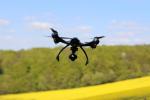H2020 SIMRA Project: Social Innovation in Marginalized Rural Areas
- Type Project
- Status Filled
- Execution 2016 -2020
- Assigned Budget 5.575.828,75 €
- Scope Europeo
- Main source of financing Horizon 2020
- Project website Proyecto SIMRA
Work throughout the 48 months of the project: Establishment of an international think tank on science, policy and practice of social innovation stakeholders, and a structured approach to ensure multi-level, multi-actor/transdisciplinary stakeholder engagement in the analysis and implementation of social innovation (Kluvankova et al., 2018); Developed a definition of social innovation: "the reconfiguration of social practices, in response to societal challenges, that seeks to improve outcomes for the well-being of society and necessarily includes the participation of civil society actors" (D2.1 www.simra-h2020.eu/index.php/deliverables/); Evidence of the role of social innovation in opening up territorial capital (Nijnik et al., 2019; Sarkki et al., 2019); The characteristics of marginalized rural areas in Europe and the Mediterranean area were categorized and mapped (D3.1) taking into account physical and socio-economic factors, and a database of social innovation examples was created (www.simra-h2020.eu/index.php/simradatabase/); A manual for the Assessment of Social Innovation in Marginalized Rural Areas was developed (D4.3) with a description of the tools for collecting and analyzing qualitative and quantitative data, and index cards for a set of indicators; An explanation of why regions with similar initial conditions for social innovation show divergent paths (D2.3); Understanding the barriers and success factors in social innovations obtained through the analysis of 24 case studies (D5.2, D5.4) and 7 innovation actions (D7.4) accessible at www.simra-h2020.eu/index.php/deliverables/ that is improving the operationalization of social innovations in different contexts and at all scales; Dissemination through 21 journal articles published until March 2020, and a final congress and training event on policy and practice (Brussels, February 2020); A program of organizing local workshops for joint learning of lessons on social innovation on the ground in Europe and the Mediterranean area; Face-to-face training course on social innovation in rural areas (Zaragoza, Spain, November 2019), aimed at practitioners, policymakers and researchers, and a massive open online course (MOOC) (www.futurelearn.com/courses/social-innovation-in-rural-areas) published in D7.5 (www.simra-h2020.eu/wp-content/uploads/2020/04/SIMRA-D7_5_Report-of-the-Training-Course-Including-E-learning.pdf); development of guides on social innovation for policy target groups (D6.3); and Practice Target Groups (D6.4) validated with stakeholders and used in training courses (D7.5). Identification of the policy framework conditions, policies and instruments for social innovations in rural areas (D6.1) and explanation of the main policy implications for social innovation in marginalized rural areas (D6.2).
In marginalized rural areas, common challenges, such as weak regional economies, transportation, infrastructure, housing, and an aging population, intersect with global issues such as climate change, sustainability, and energy and food security. These challenges require urgent solutions. Social innovation is recognized as a response to social challenges that are traditionally not well addressed by existing markets or public institutions. When markets are fragile and public sector budgets are constrained, civil society engagement may be necessary to drive social innovation and support development. Although scholars have developed approaches to define and measure the characteristics of social innovation processes, there has been a knowledge gap in linking social innovations to desired outcomes and impact, particularly in marginalized rural areas. It is essential to consider local conditions and intermediary factors. SIMRA sought to understand how social innovation contributes to addressing development challenges. Its mission was to identify and test mechanisms for addressing societal challenges, particularly in marginalized rural areas across Europe, focusing on the Mediterranean region (including non-EU countries), where there was limited evidence of outcomes and supporting conditions. The overall objectives were to advance the understanding of social innovation and innovative governance in agriculture, forestry, and rural development, and how to leverage them to improve societal well-being. The research program was designed to advance knowledge of social innovation through active collaboration with stakeholders and to support the development of institutional capacity in communities and the development of the social capital necessary for successful social innovations.
SIMRA seeks to improve the understanding of social innovation (SI) and innovative governance in agriculture, forestry, and rural development (RD), and how to boost them, particularly in marginalized rural areas across Europe, with a focus on the Mediterranean region (including non-EU countries) where there is limited evidence of outcomes and supporting conditions. These objectives will be achieved by: 1. Developing systematic frameworks: a) theoretical - to improve knowledge of the complexity of SIs and their dimensions, and their impact on the development of territorial capital; b) operational - based on a transdisciplinary coalition (researchers and practitioners) to advance the understanding of the preconditions and success factors (e.g., instruments, incentives, etc.) for implementing/operationalizing SI. 2. Creating a categorization of SIs that encompasses specificities in terms of societal priorities, relationships/collaborations, etc. and serve as an instrument to explore the reasons why regions with similar conditions show divergent paths and to "turn diversity into strength." 4. To create an integrated set of methods to assess SI and its impacts on the economic, social, environmental, institutional, and political dimensions of territorial capital. 5. To co-construct SI assessment in case studies across the spatial variation of European rural areas, considering which components of territorial capital foster or integrate DR. 6. To synthesize and disseminate new or improved knowledge on SI and novel governance mechanisms to promote social capital and institutional capacity development and inform effective options/solutions for shaping sustainable development trajectories. 7. To create collaborative learning and networking opportunities and launch innovative actions at different or multiple scales, with continuous interactions between researchers, knowledge brokers, and stakeholders to foster and embed SI, leaving a lasting legacy.
Advances in cutting-edge knowledge were achieved by operationalizing a transdisciplinary, multi-level, and multi-actor approach of continuous interactions between researchers, knowledge brokers, and stakeholders across Europe and the Mediterranean area. New theoretical and contextualized knowledge on social innovation was created, including the conceptualization of social innovation (e.g., D2.1 D2.2; www.simra-h2020.eu/index.php/deliverables/); the collection and categorization of examples of social innovation in marginalized rural areas (D3.1 D3.2 D3.3); the evolutionary pathways of social innovation in different contexts (D2.3); an inventory of tools to assess the implications of social innovation (D4.2); and perspectives on the role of policies in supporting, or supported by, social innovation in rural settings (D6.1 D6.2). Knowledge, methods, and local experience in social innovation are presented in a set of 21 articles published in scientific journals. A better understanding enabled, for the first time, a systematic collection of empirical evidence on the drivers, processes, outcomes, and impacts of social innovations, and the production of a unique manual for their evaluation (D4.3) (in 24 case studies) and analysis (D5.4). The findings identify the types of triggers and reconfigurations of governance by civil society, or socially motivated responses to market and state failures in providing services that support the quality of life and well-being of local society. These findings were used in face-to-face (35 participants) and online (516 active learners) training to enhance stakeholders' capacities in practice, research, and policy. New capacities have been developed in partner organizations and among local actors in evaluating social innovation and assessing its impacts in rural areas and have been shared with policy teams (e.g., the EU's DG Agri). Examples of social innovation in rural areas have been compiled, with an online version supported by five booklets of social innovation examples. The implementation of social innovation through the 7 Innovation Actions has strengthened human capital in rural communities, creating new processes (e.g., in VALAB, Guadeloupe, in collaboration with the EIP Agricultural Task Force) and sources of income (e.g., an online portal, ISHOPRURAL, for the marketing of local products by women in a community in Lebanon). The transdisciplinary co-learning approach has resulted in guides for policy audiences, with nine key recommendations for EU and national policy (D6.3) and practice, with a seven-step guide and checklist for self-assessment of social innovations (D6.4).
- THE JAMES HUTTON INSTITUTE (THE JAMES HUTTON INSTITUTE)







